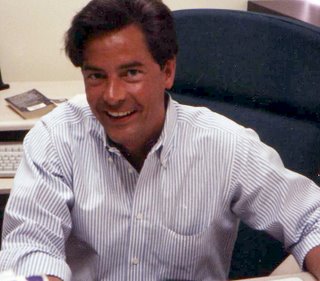By Ken Parsons
In the June, 2005 issue of Stitches magazine to wrote this interview which I thought you might find interesting.
The world of fashion embroidery is often considered alien to the average commercial embroiderer. This can probably be attributed to ignorance of potential rather than a lack of interest. To help break down some of the barriers for you, I spoke to an embroiderer who produces fashion embroidery, and a designer who uses embroidery. First, I spoke with designer Neville Bean, owner of Neville Bean Design, New York. I also thought it might be nice to hear from a digitizer who works with designers and was lucky to find Simone Balchunas, owner of Masterworks, Hauppauge, N.Y., who was very generous with her time and willing to share her personal experiences with me. This is how they both responded to my questions.
Fee For Service
KP: How do embroiderers usually charge for sample work? Is it by the time it takes to produce the final sample, by the stitch count, or is it a flat creative fee?
NB: Most embroiderers do not want to do samples if they are not going to get the production. For the most part, sample making is a money-losing process.
From the design side, I usually do embroidery designs as part of a larger design job.
They are included in the negotiated design fee for the whole project.
SB: Sample-work pricing is based on time. Some customers who have shopped in our industry question why I do not charge by the stitch count. My standard response is that a design — for example, a solid black box filled and finished with a satin stitch — may be 9,000 stitches, but takes literally 35 minutes to digitize and sample. However, there are graphically complex multicolor logos that amount to 9,000 stitches as well. The difference is that a logo such as this can take sometimes up to four hours to digitize and sample, as revisions are usually necessary.
Design Concepts
KP: How involved is the designer in the selection of stitch types and stitch directions?
NB: I usually present a stitch idea along with the artwork. They may adjust the concept depending on the capabilities of the machinery and to bring the design into a specific price point.
SB: I get very involved with the choice of stitches and stitch patterns used. Most purchasers of embroidered goods are unaware of how stitching lays on different fabrics. In order to be a great fashion embroidery designer, one must have a good knowledge of fabric and textiles. Most people don't understand that thread, as paint, is a unique medium.
Origination Of Artwork
KP: Is the initial artwork for the embroidery design created by the designer or the embroiderer?
NB: It depends on the project and whether the embroiderer has a good design archive or good artists on staff.
SB: These days, most of the artwork seems to be completed prior to arriving in the hands of a digitizer. Motifs are usually created for stationery, business cards, letterheads or signage. Those motifs are generally incorporated into the fashion product. For example, a bride will have a monogram designed by the print artist doing her invitations. That monogram will then be incorporated in an embroidered piece for the wedding: a chuppah, aisle runner, linens, chair backs and so on.
Embroiderer's Portfolio
KP: Do you, as a designer, prefer to have samples of the embroiderer's work to work from so that you are familiar with what they are capable of doing?
NB: Yes, usually the embroiderer will show a line and then do samples. These are usually revised or re-colored from the originals.
SB: My shop embroiders all of our designs. I have, from time to time, been given other shops' embroidery files to work from. I always insist on sampling prior to production. Frequently, I end up editing designs brought to me, as they are usually not production-friendly.
To read the rest of this article go to http://stitches.com/stitches/mag/apparel_sampling_fashion_market/index.html
Labels: Working with fashion designers


0 Comments:
Post a Comment
Subscribe to Post Comments [Atom]
<< Home